Imagine turning your kitchen waste into garden gold with minimal effort. Banana peels, often destined for the compost bin, hold the secret to a more vibrant, thriving garden. Whether you’re just beginning your gardening journey or have a seasoned green thumb, incorporating banana peels into your routine can be a game-changer. This often-overlooked resource is rich in nutrients that can transform your soil and invigorate your plants.
Banana peels are not just mere scraps; they are a powerhouse of potassium, phosphorous, and calcium—essential nutrients that support plant health and growth. As we explore the wonders of banana peels in gardening, you’ll discover various simple methods to harness their potential to boost your garden’s productivity. From direct soil application to creative DIY solutions, you’ll learn practical techniques that are both easy to implement and highly effective. Prepare to be amazed by how this natural, sustainable approach can enhance your garden’s beauty and yield.
In this article, we’ll guide you through the fascinating world of banana peel gardening, offering tips and tricks that cater to gardeners of all skill levels. You’ll be equipped with knowledge to nurture your plants with confidence, ensuring they receive the best care possible. By the end, you’ll understand why banana peels are more than just waste—they’re a gardener’s secret weapon waiting to be unleashed. So, grab your gardening gloves and let’s dig into this fruitful journey together!
Collect and Dry Banana Peels
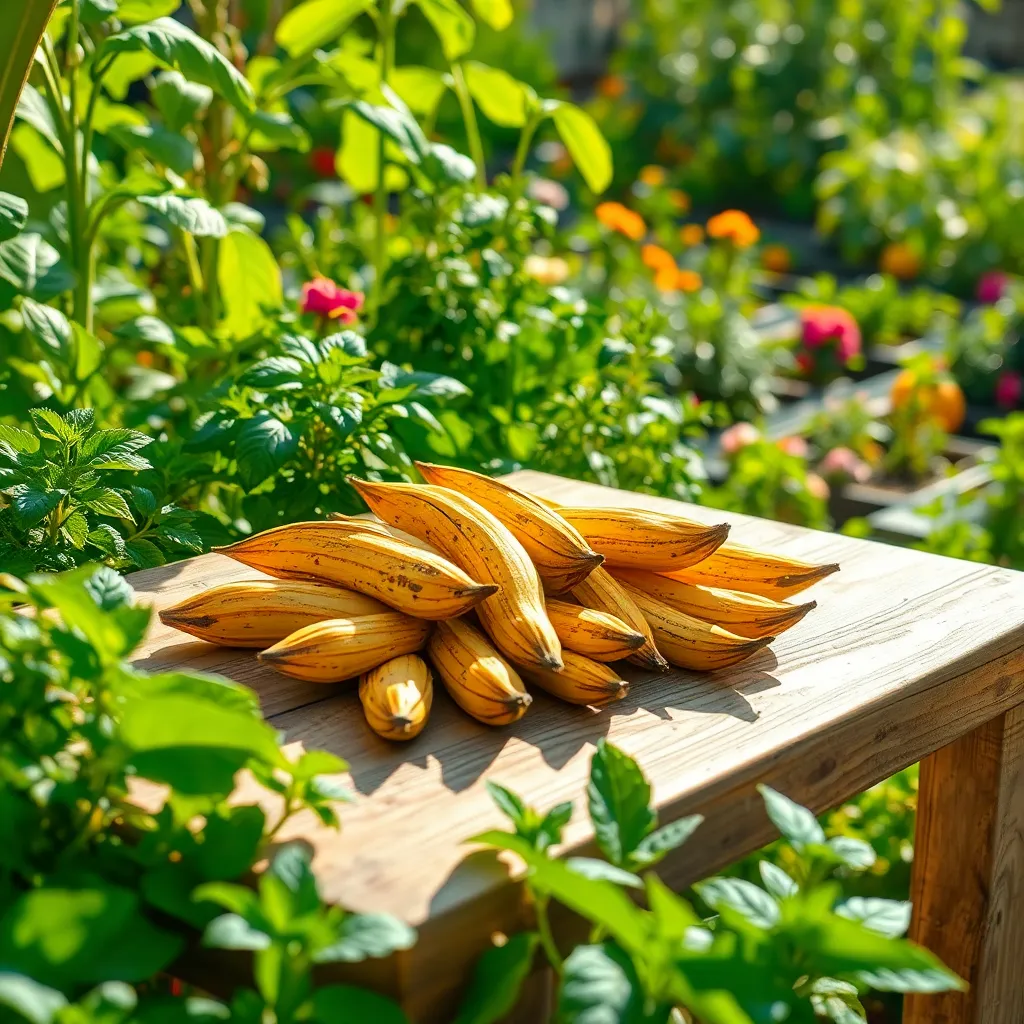
Gathering banana peels is a straightforward task that can significantly benefit your garden. Start by collecting banana peels from your daily consumption and storing them in a breathable container to prevent mold.
Before drying, cut the peels into small strips to speed up the process and make them easier to use later. Lay these strips on a sunny windowsill or dry them in a low-temperature oven, ensuring they are completely dehydrated before storage.
Once dry, these peels can be stored in airtight containers for future use. It’s important to keep them in a cool, dark place to preserve their nutrient content, which includes essential minerals like potassium and phosphorus.
For an advanced approach, consider grinding the dry peels into a fine powder. This powder can be easily mixed into soil or used as a top dressing, enhancing its accessibility to plant roots.
Chop Peels into Small Pieces
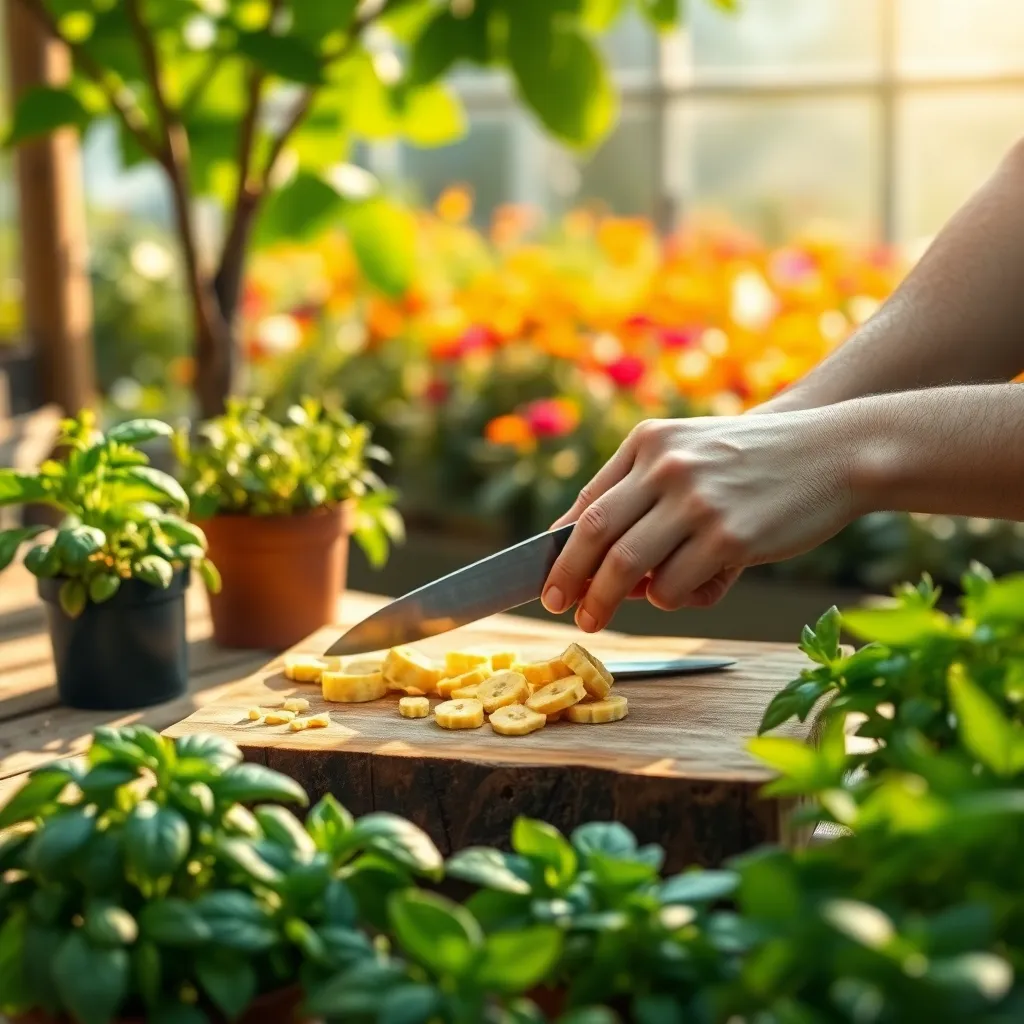
Once your banana peels are dry, the next step is to chop them into small pieces. This makes it easier for the nutrients to break down and be absorbed by the soil. Smaller pieces also help prevent any unpleasant odor, making the process more pleasant for you and your garden. Use a sharp pair of scissors or a knife dedicated to gardening to ensure precise cuts.
Incorporating chopped banana peels into your potting mix is an excellent way to enrich the soil. You can simply mix them into the soil of your garden beds or pots, ensuring they are spread evenly. This practice is particularly beneficial for potassium-loving plants like tomatoes and peppers, which thrive with this added nutrient boost.
For gardeners with more experience, consider using the chopped peels as a component in your homemade compost. By adding them to your compost heap, you’ll enhance the overall nutrient profile of your compost. Regular turning of the compost will help the banana peels decompose faster, providing a rich, dark compost ready for your plants.
If you’re aiming for immediate results, try a banana peel tea by soaking the chopped peels in water for a few days. This nutrient-rich liquid can be used as a fertilizer, offering a quick boost to your plants. Apply the tea directly to the soil around the base of your plants, being mindful not to overwater.
Mix Peels into Compost Pile
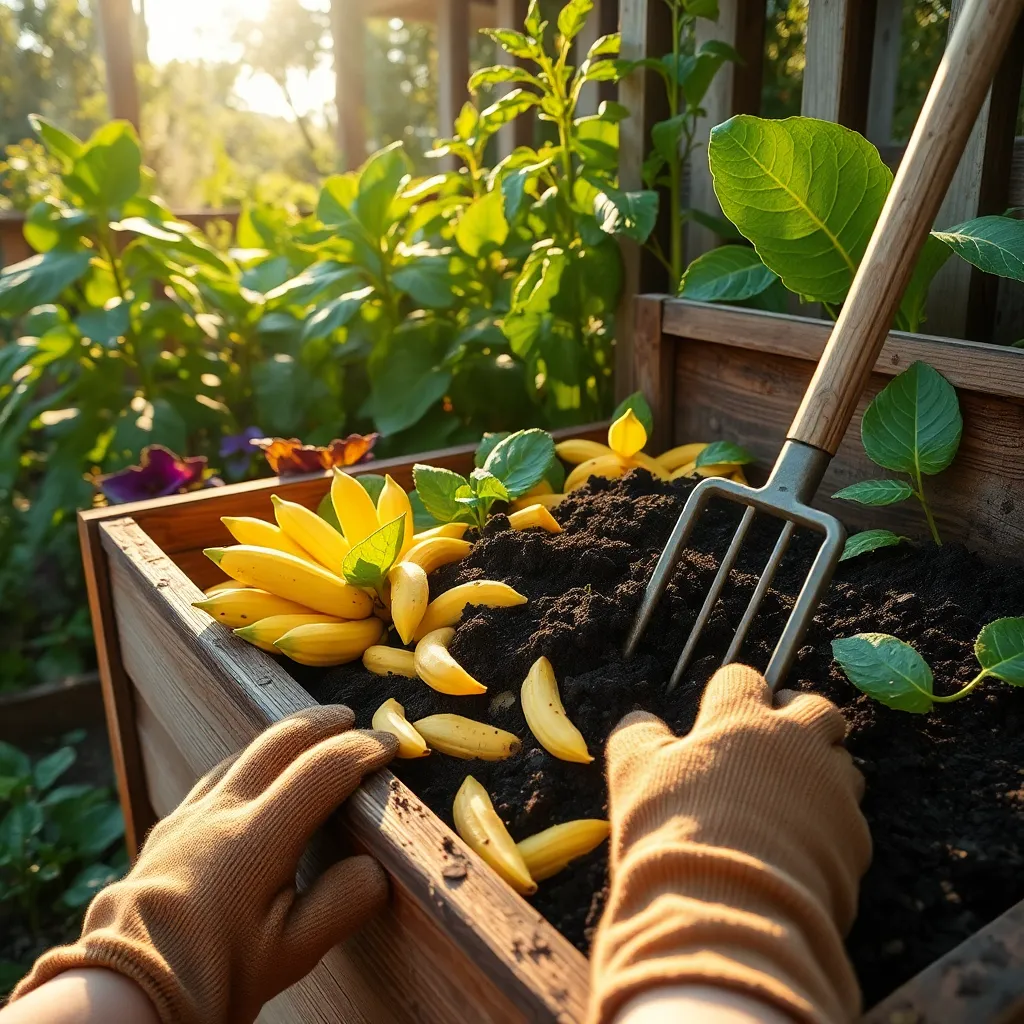
Adding banana peels to your compost pile is an excellent way to enrich your garden soil. Banana peels are rich in potassium, phosphorus, and calcium, which are vital nutrients that promote plant growth and health.
Before adding peels to the compost, ensure they’re chopped into small pieces to speed up decomposition. This allows the nutrients to break down more rapidly, making them available to plants sooner when the compost is used.
Mixing peels into your compost should be done with balance in mind. It’s important to combine banana peels with other compost materials like dried leaves, grass clippings, and kitchen scraps to maintain a healthy carbon-to-nitrogen ratio.
For beginners, it’s advisable to layer kitchen scraps, including banana peels, with brown materials like dried leaves. This layering technique helps to maintain the aeration and moisture balance needed for effective composting.
Advanced gardeners might consider adding a compost activator to speed up the process. Additionally, turning the pile every few weeks will enhance aeration, accelerating the breakdown of organic matter.
- Ensure your compost pile is appropriately moist—like a damp sponge.
- Monitor the temperature; a warm pile indicates active decomposition.
- Use a mix of greens and browns for a balanced compost.
Create Banana Peel Fertilizer Tea
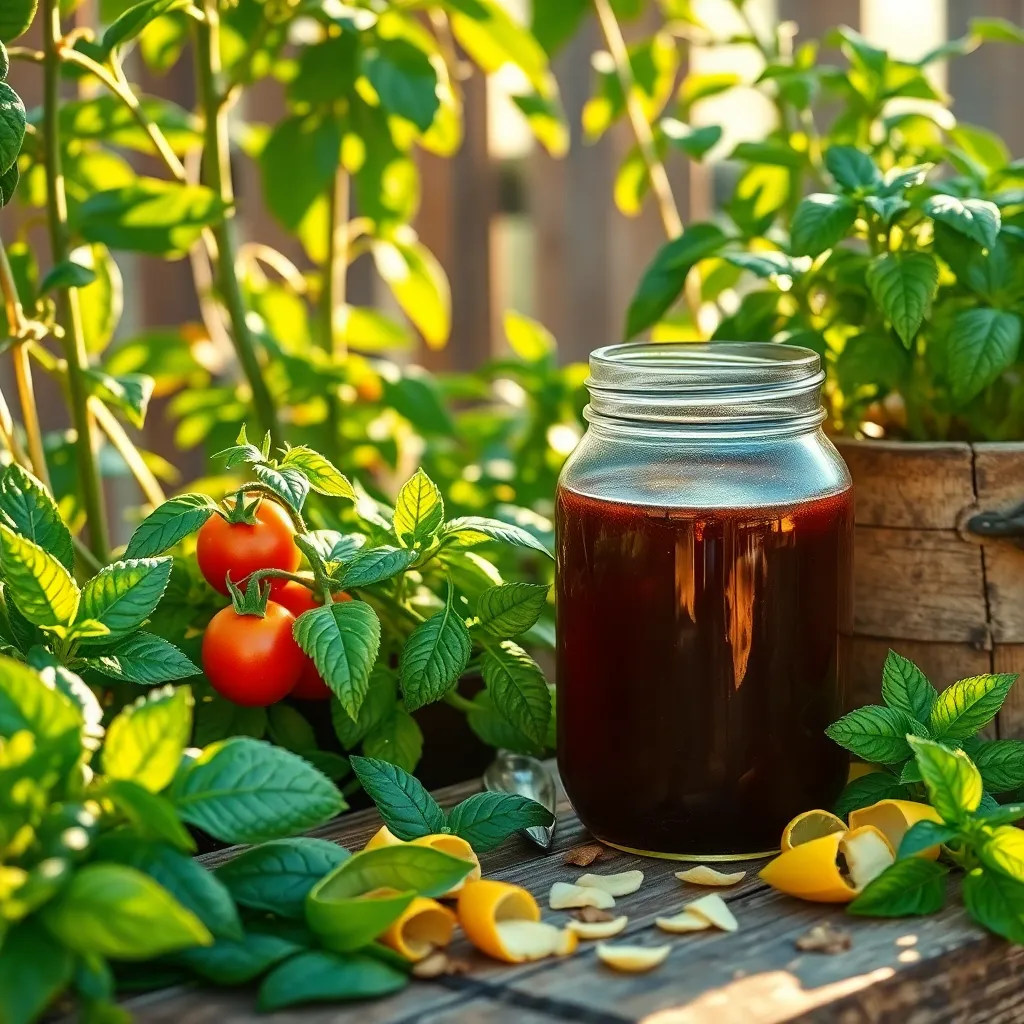
Using banana peels to create a fertilizer tea is a simple way to enrich your garden soil. Begin by collecting several banana peels and cutting them into smaller pieces to increase the surface area for nutrient release.
Next, place the chopped peels in a container and fill it with water. Allow the mixture to sit for two to three days, letting the nutrients leach into the water, creating a nutrient-rich banana peel tea.
This banana peel tea is especially beneficial for flowering and fruiting plants due to its high potassium content. Water your plants with this tea once a week, making sure the soil is moist but not waterlogged.
For more experienced gardeners, consider adding a handful of compost or manure to the tea for an extra nutrient boost. This addition can enhance the microbial activity in the soil, promoting healthy plant growth.
Remember to strain the liquid before use to avoid clogging your watering can or sprayer. By integrating banana peel tea into your gardening routine, you’ll provide a natural, sustainable boost to your plants.
Apply Mixture to Garden Beds
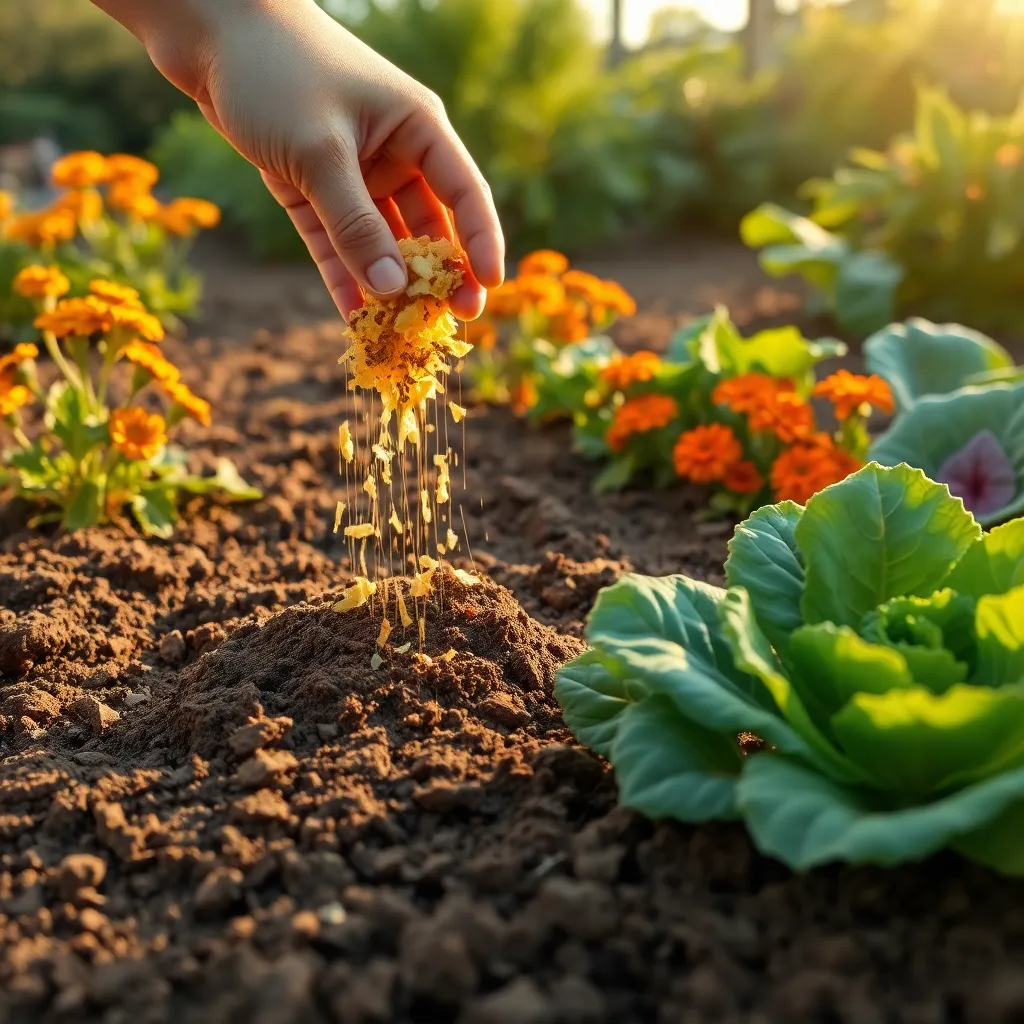
Before applying the banana peel mixture to your garden beds, make sure the soil is well-prepared. Loosen the soil with a garden fork, ensuring it is free from large clumps and debris to facilitate better absorption of nutrients.
Once the soil is ready, evenly distribute the banana peel mixture across the surface of your garden beds. Use a watering can or a garden sprayer to ensure a consistent application, allowing the mixture to seep into the soil effectively.
For best results, apply the mixture in the early morning or late afternoon when temperatures are cooler. This helps prevent evaporation and maximizes the nutrient intake by your plants, enhancing their growth and vitality.
Beginners should start by applying the mixture once a month, gradually increasing frequency as plants show positive responses. More experienced gardeners might experiment with bi-weekly applications, particularly for nutrient-demanding plants like tomatoes and peppers.
Ensure your garden beds are well-draining to prevent waterlogging, which can lead to root rot. Mix in some sand or perlite with the topsoil if drainage is an issue, creating an optimal environment for root health and nutrient uptake.
Remember to monitor your plants regularly for signs of over-fertilization, such as leaf burn. Adjust the concentration of the banana peel mixture accordingly, ensuring a balanced nutrient supply that supports vigorous plant growth.
Conclusion: Growing Success with These Plants
As we’ve explored, nurturing relationships—much like gardening—requires patience, understanding, and care. The five key concepts we covered include the importance of communication, the role of compromise, the value of shared growth, the significance of small gestures, and the need for nurturing space. These principles are crucial for cultivating a thriving relationship, just as banana peels enrich the soil to produce a bountiful garden.
Your actionable next step is to choose one of these concepts and implement it in your relationship today. Small, consistent actions can lead to profound transformations over time. Whether it’s making time for a heartfelt conversation or planning a surprise that shows appreciation, your efforts will sow seeds of deeper connection and understanding.
For future reference, make sure to bookmark this article. It can serve as a guide and a reminder of the steps you can take to maintain and enhance your relationship.
Remember, every relationship has the potential to flourish with the right care. By integrating these concepts into your everyday life, you are setting the foundation for a successful and enduring partnership. Let this article be your companion on this rewarding journey.

